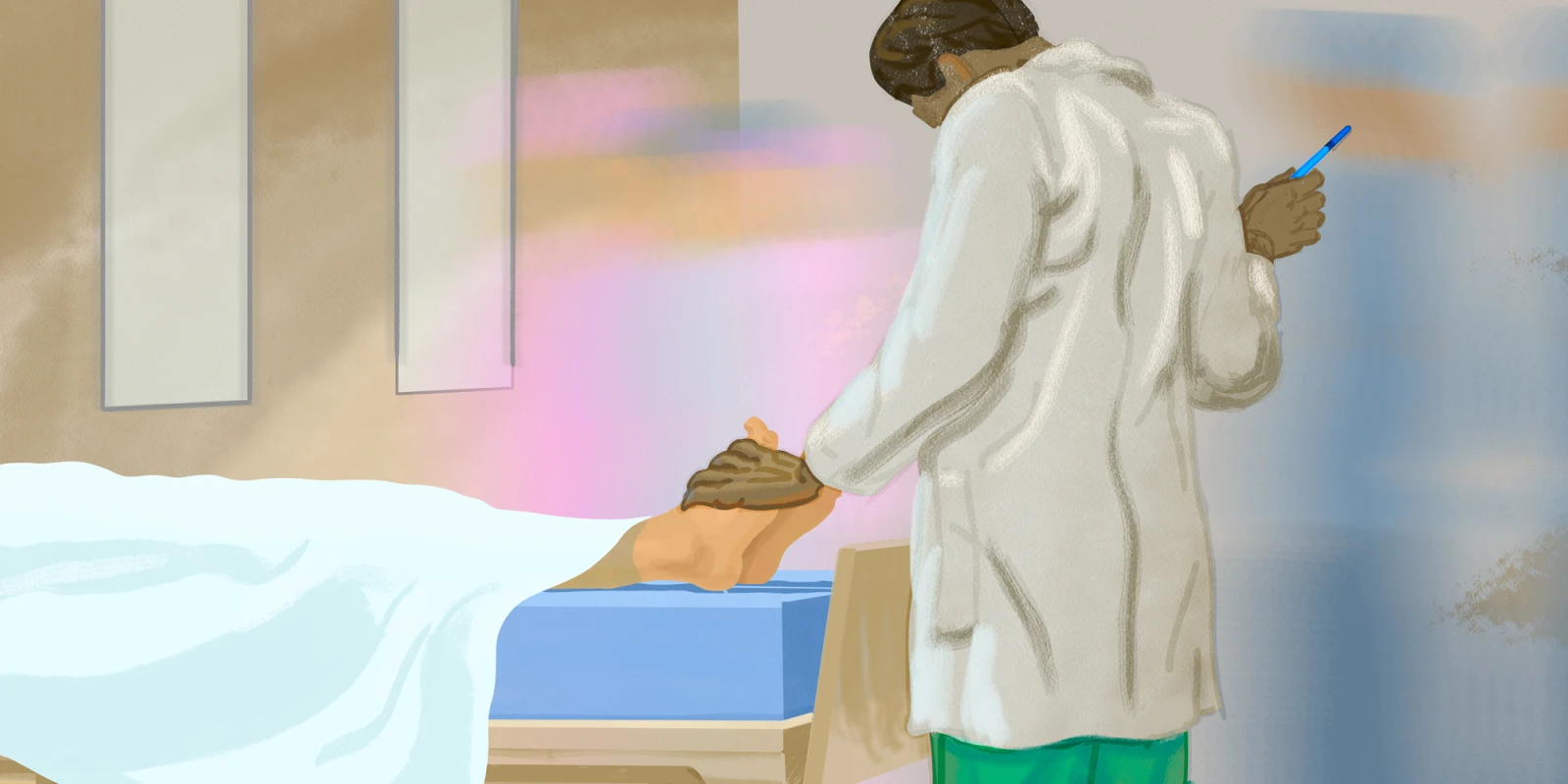
On July 1st, 2015, with internship one day behind me, I became a newly minted junior resident. I was starting a night float rotation during which I would be the sole in-house physician responsible for the care of cardiology patients both on the ward and in the intensive care unit. No senior resident to run things by, no attending to look over my shoulder. Heavily caffeinated and mildly nervous, I showed up to the Veterans Affairs hospital about 20 minutes early and settled into my workroom for the night.
As I tried to remember my login credentials, the overhead pager went off: "Code Blue. CCU. Code Blue. CCU." I looked around the workroom, and the daytime CCU team was nowhere to be found. "They must already be in the CCU," I thought to myself as I jogged to the cardiac intensive care unit. I was expecting to see a packed room of clinicians resuscitating a patient, and the flurry of activity that accompanies a cardiac arrest.
Instead, I saw a lone nurse doing chest compressions on a patient who had just been transferred from a different hospital. "Are you running this code?" he nervously asked as he glanced up at me.
Before giving it a second thought, I positioned myself at the foot of the bed and started thinking through the ACLS algorithm. A few seconds later, I began directing a room full of resident physicians, nurses, respiratory therapists, and pharmacists. The room became characteristically loud and chaotic, with medical supplies and gowns strewn all over. However, after the initial commotion that comes with emergent intubation and intraosseous line placement, the event had an almost serene, rhythmic essence from my vantage point. Interns regularly rotated to perform chest compressions, the group periodically paused for pulse and rhythm checks, and nurses administered life-saving medications every few minutes.
Throughout the code, I kept my left hand on the patient's right foot, feeling for his dorsalis pedis pulse. Every few compressions, I would feel a small beat against my fingertips. It later dawned on me that aside from feeling for his pulse, I was engaging in a form of the ages-old Hindu custom of pranama, the act of bending down to touch a revered person's feet, and paying respect to my patient. The act is rooted in the notion that one can learn even from the dust on the feet of a wise elder who has walked the earth for many years.
Generally, the revered person blesses the person touching his or her feet with a long life. In this case, my patient had blessed me with the invaluable knowledge that comes from running a code. Understanding that leadership, team management, and communication are far more important than medical knowledge in the code leader's armamentarium created a foundation I would build on in every emergent situation for the remainder of my medical training.
After about twenty minutes of resuscitation (it felt like a single protracted minute), our patient's pulse returned. Though he remained critically ill, relief swept through the room. Consultants and non-essential providers trickled away, and I was left to reflect on my first code with a colleague, also a new junior resident, who had placed an emergent internal jugular line during the code after the intraosseous line failed. We congratulated each other on a job well done, and moved on to the six patients waiting for admission in the emergency room.
Anubodh Sunny Varshney, MD is a Cardiovascular Medicine Fellow at Brigham and Women’s Hospital/Harvard Medical School in Boston, MA. His professional interests include medical device and system innovation, medical education, and physician wellness; he can be followed on Twitter @SunnyVMD.







